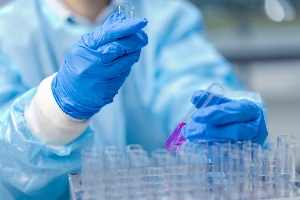 Many people don’t know it, but public health workers have had an enormous impact on America. Cleaner air. Safer food. Longer life expectancy. Public health movements have significantly contributed to these achievements. They have made us a healthier, stronger country. In this blog, you’ll learn about some of the most powerful public health accomplishments in U.S. history.
Many people don’t know it, but public health workers have had an enormous impact on America. Cleaner air. Safer food. Longer life expectancy. Public health movements have significantly contributed to these achievements. They have made us a healthier, stronger country. In this blog, you’ll learn about some of the most powerful public health accomplishments in U.S. history.
Biggest U.S. Public Health Movements
1. Clean Water and Sanitation
In the late 1800s and early 1900s, our cities were growing fast. However, sanitation systems weren’t keeping up. Diseases like cholera and typhoid were everywhere. That began to change with the public health field demanding clean water and modern sewage systems. Public health organizations also helped to promote better hygiene practices. Water treatment, plumbing codes, and public education have since drastically reduced these deadly diseases, helping increase the lifespan of the average American.
2. Vaccination Campaigns
Vaccines have saved millions of lives. In the 20th century, the U.S. launched major vaccination campaigns against diseases like polio, measles, mumps, and rubella. One of the biggest milestones? Eliminating smallpox in 1980. While it was a global effort, the U.S. had a major hand in this work. Decades later, vaccination remains one of the most cost-effective ways to prevent disease in children and entire communities.
3. Tobacco Control and Anti-Smoking Campaigns
In the 1960s, research confirmed what many had suspected: smoking causes cancer, heart disease, and many other health issues. Public health agencies responded with anti-smoking ads, warning labels, and laws about where you could (and couldn’t) smoke. They also offered support to help people quit. These campaigns led to a huge turnaround in the popularity of smoking. Among American adults, smoking has dropped from 42% in 1965 to about 12% in 2022.
4. Fight Against HIV/AIDS
When HIV/AIDS emerged in the 1980s, fear and stigma made the crisis worse. Still, public health leaders, scientists, advocates, and community organizations fought for funding, education, testing, and access to treatment. Though the fight isn’t over, HIV/AIDS has become a manageable condition, and efforts continue to reduce new infections.
5. Traffic Safety and Seatbelt Laws
Cars changed the way Americans live, but also introduced new dangers. By the 1960s and 1970s, the government took action. They introduced seatbelt laws, drunk driving campaigns, and safer car standards. The “Click It or Ticket” campaign and laws against texting while driving are modern extensions of these efforts. As safety laws, vehicle designs, and overall awareness have kept improving, many injuries have been prevented.
6. Food Safety
Food poisoning and contamination were once serious public threats. What changed? For starters, in 1906, the publication of The Jungle by Upton Sinclair exposed unsafe conditions in the meatpacking industry. The book, and society's reaction to it, helped inspire the creation of the FDA (Food and Drug Administration). Today, food safety rules, inspections, and recalls mean that there are fewer cases of foodborne illness and greater trust in what we consume.
7. Maternal and Child Health Improvements
Public health organizations have worked hard to reduce infant and maternal mortality. Programs promoting prenatal care, breastfeeding, nutrition, and childhood development have raised survival rates and long-term outcomes for kids. Fewer babies and mothers die during childbirth, and more children get a healthier start in life.
8. Spotlight on Mental Health
Once hidden or misunderstood, mental health is now seen as a vital part of overall health. Campaigns to reduce stigma, expand access to therapy, and address mental health crises, especially among youth and veterans, are growing. As a result, more people are talking about mental health and receiving better help and resources.
9. Anti-Lead Movement
For much of the 1900s, lead was found in gasoline, paint, plumbing, and even toys. Over time, researchers uncovered the serious health risks of lead exposure. For children in particular, exposure can cause developmental delays, learning problems, and behavior issues. Public campaigns and government regulation resulted in lead being removed from gasoline and household paint in the 1970s. Ongoing efforts continue to focus on replacing old pipes and cleaning up contaminated environments.
10. Emergency Preparedness and Response
Events like 9/11, Hurricane Katrina, and the COVID-19 pandemic highlighted how essential it is to prepare for large-scale emergencies. Public health agencies work continuously to improve how they plan for, respond to, and recover from natural, biological, and man-made disasters. The goal is to build stronger communication systems, stockpiles of emergency supplies, and partnerships across federal, state, and local agencies. This work will equip communities and workers to save more lives in times of crisis.
Improving the Health of All
Public health is about building a society where everyone has a chance to live a long, safe, and healthy life. If you want to learn more about the work that goes into improving community, national, and global health of a community, a Public Health degree may be right for you. Request information to learn more and talk with an Admissions Representative about our Public Health programs today!




